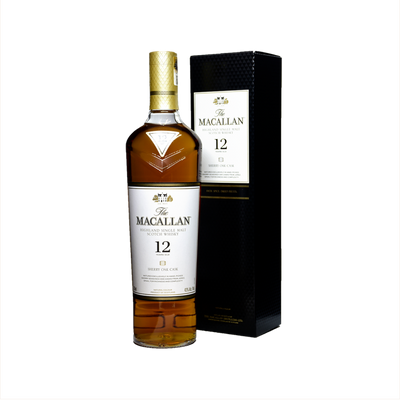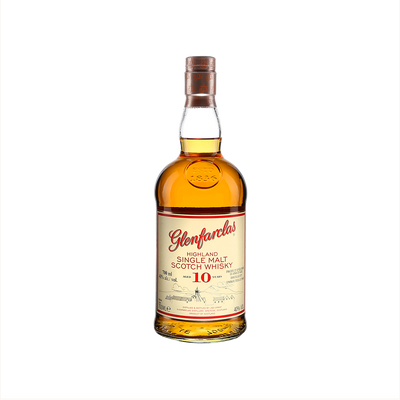Speyside Single Malt
What is Speyside Single Malt?
Speyside Single Malt is a refined category of Scotch Whisky produced exclusively in Scotland's Speyside region, which sits nestled between the Highlands and the coast in the northeastern part of the country. What defines Speyside Single Malt is its production from 100% malted barley at a single distillery within this specific geographical area, combined with the region's distinctive characteristics of clean mountain water and a temperate climate. These whiskies are celebrated for their approachable, often fruity and honeyed flavor profiles, making them some of the most beloved and accessible single malts in the world.
Learn More About Speyside Single Malt
What makes Speyside Single Malt unique?
Speyside Single Malts stand apart from other Scotch whiskies through their distinctive elegance and refined character, born from the region's abundant pure water sources and temperate climate that creates ideal maturation conditions. The area's concentrated cluster of distilleries—home to nearly half of Scotland's active malt whisky production—has fostered a shared expertise in crafting whiskies known for their honeyed sweetness, orchard fruit notes, and gentle spice, typically with minimal peat influence. This regional style contrasts sharply with the maritime brine of Islay whiskies, the robust earthiness of Highland expressions, or the lighter, grassier profiles found in the Lowlands.
How is Speyside Single Malt made?
Speyside single malt begins with malted barley that's mashed with the region's famously soft water, then fermented with yeast to create a wash that's distilled twice in copper pot stills. The clear spirit flows into oak barrels where it must age for at least three years in Scotland, though most Speyside whiskies mature much longer to develop their signature honeyed and fruity character. Each distillery follows its own closely guarded recipe for mash bills, fermentation times, and barrel selection, which explains why neighboring Speyside producers can taste so wonderfully different.
How do you drink Speyside Single Malt?
Speyside single malts shine brightest when sipped neat or with just a splash of room temperature water to open up their delicate flavors—these whiskies are far too refined for shots and rarely appear in cocktails since mixing would mask their subtle apple, honey, and floral notes. When they do venture into cocktail territory, it's usually in spirit-forward drinks like an Old Fashioned or Whisky Sour, though purists might cringe at the thought. These elegant whiskies make perfect companions for cool autumn evenings by the fireplace or special celebrations where you want to savor something truly special, rather than casual summer gatherings where their nuanced character might get lost.
How do I choose a good Speyside Single Malt?
Start by considering your flavor preferences—if you enjoy lighter, fruit-forward whiskies, look for expressions from distilleries like Glenfiddich or Balvenie, while those seeking richer, sherried notes should explore Macallan or GlenDronach bottlings. For cocktails, stick with younger expressions (12-15 years) that won't be overwhelmed by mixers, saving the older, more complex bottles for neat sipping. Check the cask type on the label since ex-bourbon barrels produce vanilla and honey notes perfect for highballs, while sherry casks add dried fruit complexity that shines in spirit-forward cocktails like a Rob Roy.
Nutritional Information
Typical Calorie Range per Ounce: 64-70 calories
Typical Carbohydrate Range per Ounce: 0-0.1 grams
Typical Sugar Range per Ounce: 0 grams
Typically Gluten Free: Yes
While Speyside Single Malt Scotch whisky is generally considered gluten-free due to the distillation process that removes gluten proteins, individuals with celiac disease or severe gluten sensitivities should always check detailed product information and consult with their healthcare provider to confirm gluten-free status for specific brands and expressions.
Scrolled this far? Your reward? Speyside Single Malt trivia!
- The "Golden Triangle" sits on ancient seabeds. Speyside's legendary distilleries like Macallan, Glenfiddich, and Glenlivet are built on limestone deposits from when Scotland was underwater millions of years ago. This calcium-rich foundation naturally filters the water, giving Speyside whiskies their distinctive smooth, honeyed character. The whisky you're sipping literally tastes like prehistoric oceans.
- Speyside has more active distilleries than people in some of its towns. The village of Dufftown (population: 1,700) houses seven working distilleries within its borders. Local joke: "Rome was built on seven hills, Dufftown stands on seven stills." Meanwhile, Rothes has five distilleries for just 1,200 residents. Talk about living the spirit life.
- Cooper apprentices train for seven years—longer than medical school. Speyside distilleries still employ traditional coopers who hand-craft and repair oak barrels. These craftsmen undergo a seven-year apprenticeship, learning to shape wood using techniques unchanged for centuries. A master cooper can tell if a barrel will leak just by the sound it makes when struck with a hammer.
- Distillery cats are official employees with pension plans. Many Speyside distilleries employ cats to control mice and rats that might contaminate grain stores. At Glenturret, the distillery cat Towser holds the Guinness World Record for catching 28,899 mice during her 21-year career. These feline employees often receive official titles, healthcare, and retirement benefits from their distilleries.
- The region's success started with illegal smuggling tunnels. Before whisky became legal in 1823, Speyside bootleggers carved elaborate tunnel networks through the Cairngorm mountains to avoid tax collectors. These same remote locations, chosen for their secrecy, turned out to have perfect water sources and climate conditions for whisky-making. Today's premium distilleries literally built their reputations on outlaw foundations.
Higher-proof spirits can be intense. Mix carefully, taste thoughtfully, and enjoy responsibly.
Gift message (optional)


